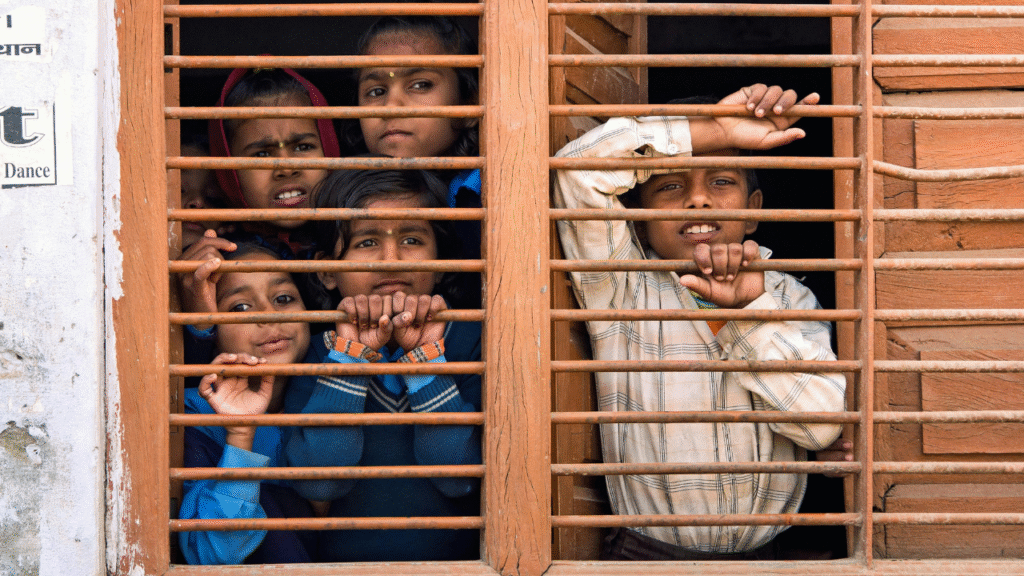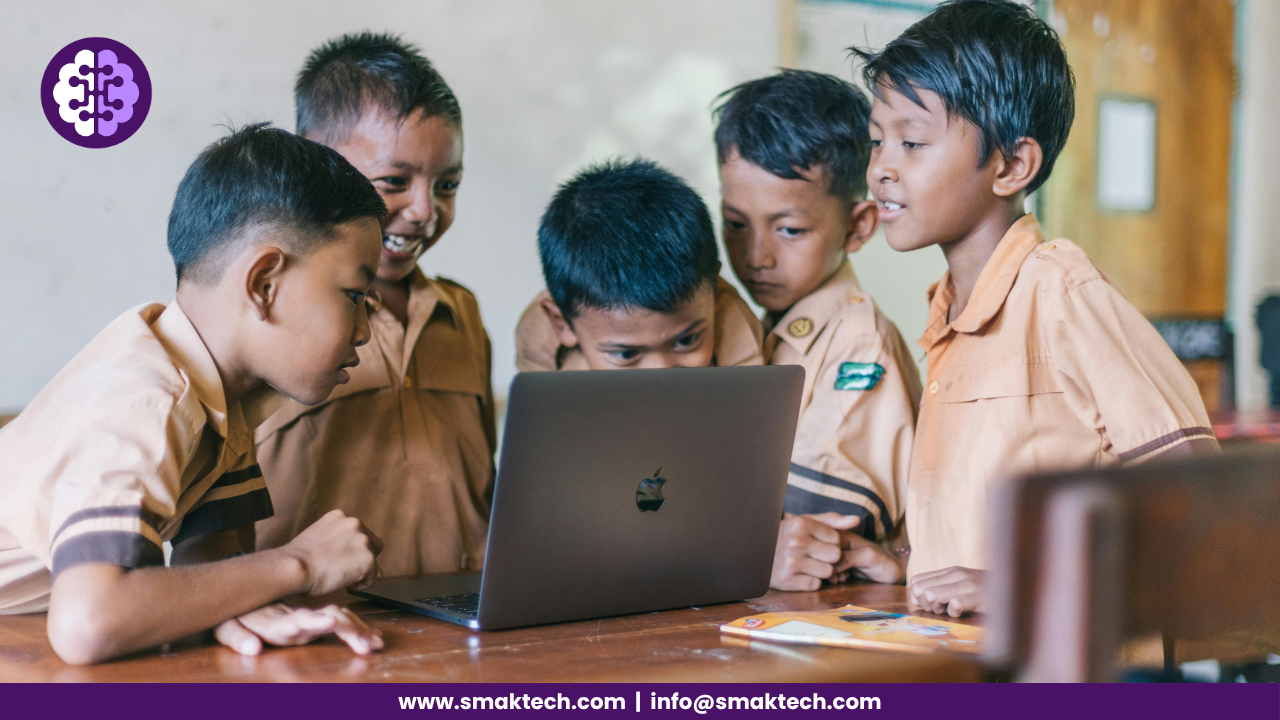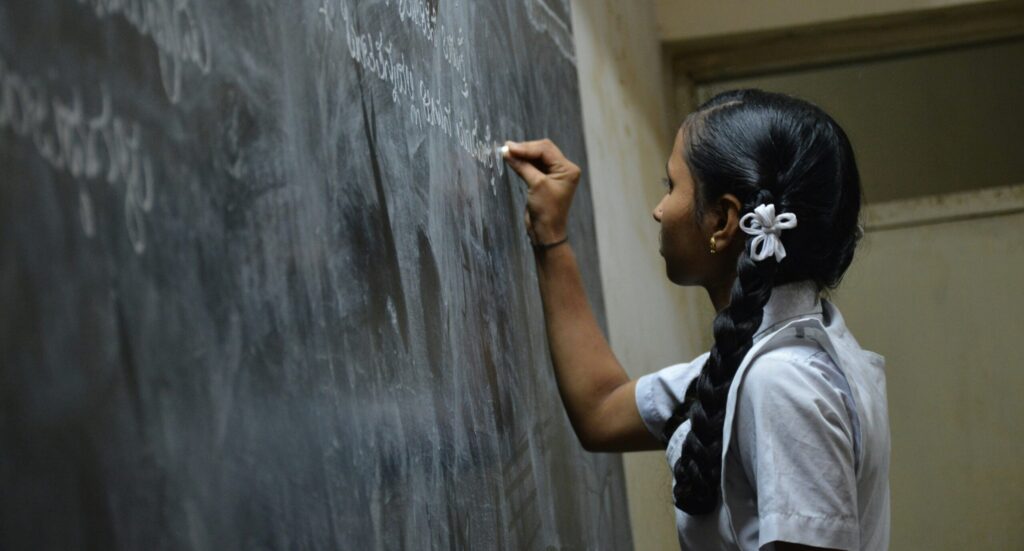Imagine two students: One logs into a virtual science lab on a tablet, while the other walks 5 km to find a working computer. Or one uses a fiber optic broadband while the other sits under a tree, hoping the signal doesn’t drop during an online test. This isn’t just a contrast in convenience, it’s a stark example of educational inequality. All this describes the digital divide, a division of affordability, where, in this fast-moving world, many children are left behind.
Table of Contents
ToggleWhat does the digital divide mean?
The inequality in access to digital technology or simply an educational inequality in terms of –
- Digital devices – The educational inequality due to digital devices is a significant reason behind the digital divide. It results in students missing assignments, live classes, and feedback. Getting access through a smartphone sometimes becomes difficult as many educational apps, videos, and quizzes are optimized for devices, difficult. Exposure to these devices is important for developing digital literacy.
- Internet connectivity – As per the UDISE+ report 2023-24, only 54% of schools in India have internet access, and in rural India, this drops to just 18.47%.Even if a student has access to digital devices but no up-to-the-mark connectivity, the motive remains unfulfilled. Without a stable connection, no one can attend online lessons or live interactions. Timely submission of assignments also remains a task.
- Digital literacy – Nowadays, the proper use of smartphones and computers is just not optional; it is foundational. While over 80% of rural children have access to smartphones, not all use them for educational purposes. The main concern lies in using the digital tools and platforms effectively and responsibly. Navigation of the internet safely, accessing educational content, and understanding online safety all come under digital literacy. It is important for protecting students from misinformation and scams.
Why does it matter?
- Learning gaps- According to the ASER 2022 Report, basic reading and math skills of children in government schools declined sharply post-pandemic, especially in rural areas. The causes were a lack of internet facilities, unstable connections. Students forget concepts if the lessons progress online, causing disrupted learning patterns.
- Dropout risks- The digital divide can derail the educational journey of a student completely. When students can’t keep up with their peers, the risk of dropout increases sharply. You may find it at an extreme consequence, but in reality, it happens too often in low-income households. Not keeping up the the studies due to a lack of resources makes the parents consider dropping out a better option.
No collaborative environment- Missing out on group projects on Zoom, Microsoft Teams, is a common consequence of the digital divide. It leads to failure to communicate in real time. Even with access, many students don’t know how to access files, share them, track, and use cloud tools. This creates an avoidance of collaborative tasks. Students in a better collaborative environment ahs access to real-world work environments, gain social emotional learning, whereas students from rural areas are less likely to get such an enriching experience.
Discover how SmakTech can bring affordable digital access to every classroom. Book a Free Demo Now!

Digital divide in India
PM WANI-
- The PM-WANI (Prime Minister Wi-Fi Access Network Interface) scheme aims to proliferate broadband through public Wi-Fi services across the country.
- It has set up Public Data Offices (PDOs) to set up wifi hotspots, Public Data Office Aggregators (PDOAs)to manage and authenticate users. It also has app providers to offer mobile applications to access wi-fi hotspots.
- According to the PIB, “The total number of PM-WANI Wi-Fi hotspots installed in the country, as on 20.03.2025, is 2,78,439.”
Bharat Net project-
- It was implemented by Bharat Broadband Network Limited (BBNL), a Special Purpose Vehicle under the Department of Telecommunications, to improve digital infrastructure in rural areas.
- According to the PIB as of March 19, 2025, 2,18,347 Gram Panchayats (GPs) have been made service-ready under the BharatNet project.
- A total of 6,92,676 km of Optical Fiber Cable (OFC) has been laid, with 12,21,014 Fibre-To-The-Home (FTTH) connections commissioned and 1,04,574 Wi-Fi hotspots installed.
AI Pragya Scheme–
- The AI Pragya scheme is a program launched by the government of Uttar Pradesh in May 2025 for enhancing digital literacy.
- 10 lakh citizens will be trained in areas like artificial intelligence, machine learning, data analytics, and cybersecurity.
- Participants will receive certification, and the initiative aims to support employment and startup culture in the state.
Internet Saathi-
- It was a programme launched in 2015 by Google India and Tata Trusts aimed to bridge the digital gender divide in rural India by empowering women with digital literacy. The initiative is to train local women, known as “Saathis.”
- According to Tata Trusts, the Trusts have built a strong network of close to 60,000 saathis, who have imparted digital literacy to more than 20 million women across 200,000 villages.
Educational Inequality in India: Where are we lacking?
The schemes have been implemented, but a deeper insight into the programs shows the shortcomings:
- Economic viability- The availability of inexpensive mobile data in India raises questions about the economic sustainability of PM-WANI. Students may prefer mobile data over public Wi-Fi, potentially limiting the scheme’s adoption. Low revenue and high setup costs make it a less prefereed choice.
- Underachieved targets – The Bharat Broad project has encountered delays, missing key deadlines in 2014, 2015, 2019, and 2023. The 2025 target for universal rural broadband connectivity is also at risk. This causes many students to noa access to online classes and e- learning platforms. No direct access to schools or homes. Students have to walk kilometers to access the internet at CSCS centers.
- Infrastructure gap- As of January 2025, through the government’s BharatNet programme, only 1.99 lakh out of 6.5 lakh villages, or 30.4%, had broadband access. High Deployment Cost, extending broadband to remote and hilly terrains, requires significant investment, making it less attractive for private players. Also, it limits the exposure due to unreliable broadband. Thus, they ought to adopt smart classrooms. According to the Times of India Nationwide, only 57.2% of schools have working computers, and 53.9% have internet connectivity.
- Poor maintenance- Infrastructure set up under BharatNet or Common Service Centres often falls into disrepair due to a Lack of trained technical staff and Corruption in vendor contracts. Unless there is a skilled staff to use the service, it causes underutilization of the same. Students are still left using chalkboards when the fibers lie unused nearby.
- Power supply- Even if the students get access, the frequent power cuts and poor maintenance of routers, switches are the main concern.
bridging the digital divide
- Mandating the connection reach of Bharat Net to government schools, Anganwadi, and community libraries.
- Installing solar power backups at schools and common service centres.
- Setting up a tracking system for downtime reporting.
- Offering zero-rated access to e learning platforms via these connections
- Expand schemes like PM e-Vidya or state-led digital device distribution
- Conduct monthly digital training workshops in schools using BharatNet.
- Appoint Digital Fellows or Internet Saathi-type volunteers to teach basic ICT and online learning.
- Link each school’s digital infrastructure and usage metrics (login data, learning time, performance) to district education dashboards.
- Provide setup subsidies, bandwidth cost-sharing, or tax rebates to PDOs who connect schools and homes.
The digital divide is not just a connectivity gap — it’s a gap in opportunity and growth. No child should be left behind simply because of a lack of digital literacy. It’s time for schools, educators, and innovators to come together and build a bridge toward inclusive, tech-enabled learning for all.

Hello, I’m Deeksha, a content writer, an aspiring marketer, and a curious learner. My writing journey started off during my college days, working as an intern. This helped me recognise how much potential writing, as a tool, holds in shaping narratives. With time, the topics that I have gained interest and expertise writing in, are Education and EdTech. I love simplifying complex topics into accessible insights, inviting the reader to think deeper and spark curiosity.
When I’m not writing, you will find me exploring digital trends, experimenting with design tools, and listening to podcasts.
Feel free to ping me on my work email, deeksha@smaktech.com, to discuss my work at SmakTech or for any work-related queries!



